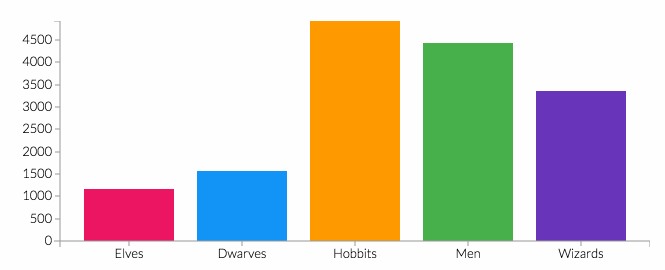PENGALAMAN PROSES PEMBELAJARAN JARAK JAUH DI PERGURUAN KEAGAMAAN ISLAM NEGERI: DAMPAK PANDEMI COVID-19
DOI:
 https://doi.org/10.32478/evaluasi.v5i2.764
https://doi.org/10.32478/evaluasi.v5i2.764
Abstract
The Covid-19 pandemic has wholly changed all aspects of life, including the learning system in higher education. So that the learning process must be carried out with a total distance education model, in its implementation, it is not accompanied by good planning. The main purpose of this study is to describe and examine the differences in the experiences of lecturers and students in carrying out the learning process with the distance education model as the impact of the Covid-19 Pandemic. This research was conducted using a descriptive quantitative approach and a different test. The research instrument is a questionnaire designed based on distance education theory. The measurement scale uses a Likert scale (1=strongly disagree to 5=strongly agree). Data were collected through surveys to lecturers and students. Due to the Covid-19 pandemic, the questionnaire was designed in a Google Form and distributed through the WhatsApp Group of colleagues at several Islamic Universities in Indonesia. The number of respondents collected was N=527 (n=123 lecturers and n=404 students). Before data analysis, data were edited, and the result was that all data were declared valid. Data analysis used the Categorization Index and a different test with the Independent-Samples Kolmogorov-Smirnov Test approach. The results of the descriptive research show that the learning process using the distance education model, from the experience of the lecturers, is stated to be less effective and even tends to be ineffective. Student experience also shows the same thing, which is less effective, and the small number of many students say it is effective. The difference in experience in the learning process with the distance education model between lecturers and students is different. This difference is caused by the habit between lecturers and students using information technology devices as a medium in distance education that is not the same.
Downloads
References
Alsoliman, B. (2015). A Strategic Approach To The Implementation Of Quality Distance Learning In Saudi Arabia: An Embedded Case Study [School of the Built Environment College of Science and Technology University of Salford]. http://usir.salford.ac.uk/id/eprint/37589/1/Final Version.pdf
Ananga, P., & Biney, I. K. (2017). Comparing Face-To-Face And Online Teaching And Learning In Higher Education. MIER Journal of Educational Studies, Trends & Practices, 7(2), 165–179. https://doi.org/10.52634/mier/2017/v7/i2/1415
Arkorful, V., & Abaidoo, N. (2015). The role of e-learning, advantages and disadvantages of its adoption in higher education. International Journal of Instructional Technology and Distance Learning, 12(1), 29–42.
Azwar, S. (2012). Penyusunan Skala Psikologi (2nd ed.). Pustaka Pelajar.
Bates, A. W. (2005). Technology, e-learning and distance education (Second). Routledge.
Bates, A. W. (2015). Teaching in a digital age: Guidelines for designing teaching and learning for a digital age. Tony Bates Associates Ltd.
Bower, B. . (2001). Distance Education: Facing the Faculty Challenge. Online Journal of Distance Learning Administration, 4(2). https://www.learntechlib.org/p/92506/
Bozkurt, A. (2019). From distance education to open and distance learning: A holistic evaluation of history, definitions, and theories. In Handbook of Research on Learning in the Age of Transhumanism (pp. 252–273). Hershey, PA: IGI Global.
Cheng, L., Rushing, R., Xu, Z., & Dogan, N. A. (2017). Theoretical Frameworks in Distance Education. In Distance Education: A Guide for Theory and Practice. https://www.aritzhaupt.com/distance_education/theoretical-frameworks/
Christo-Baker, E. A. (2004). Distance Education as a Catalyst for Change in Higher Education. Proceedings of the 2004 ASCUE Conference, Www.Ascue.Org, 39–49. https://files.eric.ed.gov/fulltext/ED490098.pdf
Covid19.go.id. (2020). Tanya Jawab Covid-19. https://covid19.go.id/tanya-jawab?search=Apa yang dimaksud dengan pandemi
Dirani, K. M., & Won Yoon, S. (2000). InternationalExploring Open Distance Learning at a Jordanian University: A Case Study. The International Review of Research in Open and Distributed Learning, 10(2), 125–133. http://www.irrodl.org/index.php/irrodl/article/view/599/1251
Dumford, A. D., & Miller, A. L. (2018). Online learning in higher education: exploring advantages and disadvantages for engagement. Journal of Computing in Higher Education, 30(3), 452–465. https://doi.org/10.1007/s12528-018-9179-z
Fojtík, R. (2018). Problems of Distance Education. International Journal of Information and Communication Technologies in Education, 7(1), 14–23. https://doi.org/10.2478/ijicte-2018-0002
Guri-Rosenblit, S. (2013). Distance Education Systems and Institutions in the Online Era: An Identity Crisis. https://doi.org/DOI: 10.1002/9781118557686.ch1
Heydenrych, J. F., & Prinsloo, P. (2010). Revisiting the five generations of distance education : Quo vadis? Progressio, 32(1), 5–26.
Holmberg, B. (1989). Theory and Practice of Distance Education. Routledge.
Hrastinski, S. (2008). Asynchronous and Synchronous E-Learning. Educause Quartely, 4, 51–55. https://er.educause.edu/-/media/files/article-downloads/eqm0848.pdf
Huang, R., Tlili, A., Chang, T. W., Zhang, X., Nascimbeni, F., & Burgos, D. (2020). Disrupted classes, undisrupted learning during COVID-19 outbreak in China: application of open educational practices and resources. Smart Learning Environments, 7(1). https://doi.org/10.1186/s40561-020-00125-8
Jung, I. (2019). Introduction to theories of open and distance learning. In Open and Distance Education Theory Revisited Implications for the Digital Era (pp. 1–9). Springer Nature.
Kebritchi, M., Lipschuetz, A., & Santiague, L. (2017). Issues and Challenges for Teaching Successful Online Courses in Higher Education. Journal of Educational Technology Systems, 46(1), 4–29. https://doi.org/10.1177/0047239516661713
Keegan, D. (1983). Six distance education theorists. International Extension College.
Keegan, D. (1986). The foundations of distance education. Croom Helm.
King, F. B., Young, M. F., & Richmond, K. (2001). Defining Distance Learning and Distance Education. In Educational Technology Review (Issue May 2014).
Kutluk, F. A., & Gulmez, M. (2012). A Research about Distance Education Students’ Satisfaction with Education Quality at an Accounting Program. Procedia - Social and Behavioral Sciences, 46, 2733–2737. https://doi.org/10.1016/j.sbspro.2012.05.556
Mapuva, J. (2009). Confronting challenges to e-learning in Higher Education Institutions. International Journal of Education and Development Using Information and Communication Technology, 5(3), 101–114.
Markova, T., Glazkova, I., & Zaborova, E. (2017). Quality Issues of Online Distance Learning. Procedia - Social and Behavioral Sciences, 237(June 2016), 685–691. https://doi.org/10.1016/j.sbspro.2017.02.043
Martens, R., Bastiaens, T., & Kirschner, P. A. (2007). New learning design in distance education: The impact on student perception and motivation. Distance Education, 28(1), 81–93. https://doi.org/10.1080/01587910701305327
Mathew, I. R., & Iloanya, E. J. (2016). Open and Distance Learning: Benefits and Challenges of Technology Usage for Online Teaching and Learning in Africa. Pan-Commonwealth Forum 8 (PCF8). http://hdl.handle.net/11599/2661
Messo, I. N. (2014). Students’ Perception on the Quality of Open and Distance Learning Programmes in Tanzania. Huria - Journal of the Open University of Tanzania, 18(1), 119–134.
Moodley, S. (2002). Inclusive Education: Challenges for Distance Learning, Policy and Practice. Patways 6 Conference 2002, February 2001.
Moore, M. G., & Kearsley, G. (2011). Distance education: A systems view of online learning (3rd ed.). Wadsworth Cengage Learning.
Musingafi, M. C. C., Mapuranga, B., Chiwanza, K., & Zebron, S. (2015). Challenges for open and distance learning (ODL) students: Experiences from students of the Zimbabwe Open University. Journal of Education and Practice, 6(18), 59–66.
Newby, T. J., Stepich, D. A., Lehman, J. D., & Russell, J. D. (2000). Instruction technology for teaching and learning. Merrill.
Novak, J. D. (1998). Learning, creating, and using knowledge: Concept maps as facilitative tools in schools and corporations. Erlbaum.
Nsamba, A. N. (2016). Exploring the quality of students ’ support services in distance learning environments in the subject University of South Africa supervisor : prof M E Makoe March 2016. UNISA PhD Thesis, March.
Nwankwo, A. A. (2015). Students’ Learning Experiences and Perceptions of Online Course Content and Interactions. ProQuest Dissertations and Theses, 137. https://lopes.idm.oclc.org/login?url=http://search.proquest.com/docview/1651611965?accountid=7374%5Cnhttp://xs6th8dt4r.search.serialssolutions.com/?ctx_ver=Z39.88-2004&ctx_enc=info:ofi/enc:UTF-8&rfr_id=info:sid/ProQuest+Dissertations+%26+Theses+Global&rft
O’Donoghue, J., Singh, G., & Green, C. (2004). A comparison of the advantages and disadvantages of IT based education and the implication upon students. Interactive Educational Multimedia: IEM, 9(9), 63–76.
Oliveira, M. M. S. de, Penedo, A. S. T., & Pereira, V. S. (2018). Distance education: advantages and disadvantages of the point of view of education and society. Dialogia, 29, 139–152. https://doi.org/10.5585/dialogia.n29.7661
Owusu-Boampong, A., & Holmberg, C. (2015). Distance education in European higher education – THE POTENTIAL (Report 3 (of 3) of the IDEAL (Impact of Distance Education on Adult Learning) project.). https://static1.squarespace.com/static/5b99664675f9eea7a3ecee82/t/5c86557008522903c3b034c2/1552307582370/ideal_report_3_extended.pdf
Pardanjac, M., Radosav, D., & Jokic, S. (2009). Advantages and disadvantages of distance learning. MIPRO 2009 - 32nd International Convention Proceedings: Computers in Education, 4(381), 237–241. https://doi.org/10.23947/itno.2020.248-250
Perveen, A. (2016). Synchronous and Asynchronous E-Language Learning: A Case Study of Virtual University of Pakistan. Open Praxis, 8(1), 21–39. https://doi.org/10.5944/openpraxis.8.1.212
Peters, O. (2007). The most industrialized form of education. In M. G. Moore (Ed.), Handbook of distance education (2nd ed., pp. 57–68). Lawrence Erlbaum Associates.
Pishvanova, V., Malinko, E., & Tsyganok, Z. (n.d.). Advantages And Disadvantages of Distance Learning. https://ir.kneu.edu.ua/bitstream/handle/2010/8423/609-614.pdf?sequence=1
Pranita, E. (2020). Diumumkan Awal Maret, Ahli: Virus Corona Masuk Indonesia dari Januari. Kompas.Com. https://www.kompas.com/sains/read/2020/05/11/130600623/diumumkan-awal-maret-ahli--virus-corona-masuk-indonesia-dari-januari
Ramírez Montoya, M. S. (2013). Retos y perspectivas en el movimiento educativo abierto de educación a distancia: Estudio diagnóstico en un proyecto SINED. RUSC Universities and Knowledge Society Journal, 10(2), 414–430. https://doi.org/10.7238/rusc.v10i2.1719
Rezaei, M. (2009). Challenges of developing online learning in higher education in Iran. Turkish Online Journal of Distance Education-TOJDE, 10(4), 80–90.
Schlosser, L. A., & Simonson, M. R. (2009). Distance education: Definitions and glossary of terms (Second). Information Age Publishing.
Simonson, M., & Schlosserharles, C. (1999). Theory and distance education : A new discussion. American Journal of Distance Education, 13(1), 60–75. https://doi.org/https://doi.org/10.1080/08923649909527014
Simonson, M., Smaldino, S., Albright, M., & Zvacek, S. (2006). Teaching and learning at a distance: Foundations of distance education. Pearson.
Svinicki, M., & McKeachie, W. J. (2011). Teaching tips: Strategies, research, and theory for college and university teachers (13th ed.). Wadsworth.
Tao, Y. H., & Rosa Yeh, C. C. (2008). Typology of teacher perception toward distance education issues - A study of college information department teachers in Taiwan. Computers and Education, 50(1), 23–36. https://doi.org/10.1016/j.compedu.2006.03.005
Tibi, M., & Tibi, L. (2009). Distance Learning: What are its Strengths and Pitfalls? Journal in Educational and Social Sciences, 13(2003), 71–98.
Trianto. (2007). Model-model pembelajaran inovatif berorientasi kontruktivistik. Prestasi Pustaka.
UNESCO. (2002). Open And Distance Learning: Trends, Policy And Strategy Considerations. In Education + Training. https://doi.org/10.1108/eb017294
Vlasenko, L., & Bozhok, N. (2013). Advantages and Disadvantages of Distance Education. International Journal of Instructional Technology and Distance Learning, 10(10), 53–58.
Wang, H.-Y. (2015). Challenges for Distance Education: A cultural analytic perspective on asynchronous online courses in Sweden. https://lup.lub.lu.se/student-papers/search/publication/5045707
Watson, J. (2008). Blended Learning: The Convergence of Online and Face-to-Face Education. https://files.eric.ed.gov/fulltext/ED509636.pdf
West, R., & Turner, L. H. (2008). Pengantar teori komunikasi: Analisis dan aplikasi (3rd ed.). Penerbit Salemba Humanika.
Widyanuratikah, I. (2020, April 10). Hampir 100 Persen Perguruan Tinggi Terapkan PJJ. Republika. https://republika.co.id/berita/q8kyzq430/hampir-100-persen-perguruan-tinggi-terapkan-pjj
Yaumi, M. (2007). the Implementation of Distance Learning in. Learning, 1996, 196–215.Downloads
Additional Files
Published
Issue
Section
License
Authors hold and retain copyright and grant the journal right of first publication with the work simultaneously licensed under a http://creativecommons.org/licenses/by-sa/4.0 that allows others to share the work with an acknowledgment of the work's authorship and initial publication in this journal.

This work is licensed under a Creative Commons Attribution-ShareAlike 4.0 International License.
How to Cite
Most read articles by the same author(s)
- Slamet Slamet, Larasati Sukma Nurhidayah, EVALUASI KINERJA LAYANAN PENDIDIKAN TINGGI: PENDEKATAN METODE IMPORTANCE-PERFORMANCE ANALYSIS , Evaluasi: Jurnal Manajemen Pendidikan Islam: Vol. 7 No. 2 (2023): EVALUASI- Edisi September









